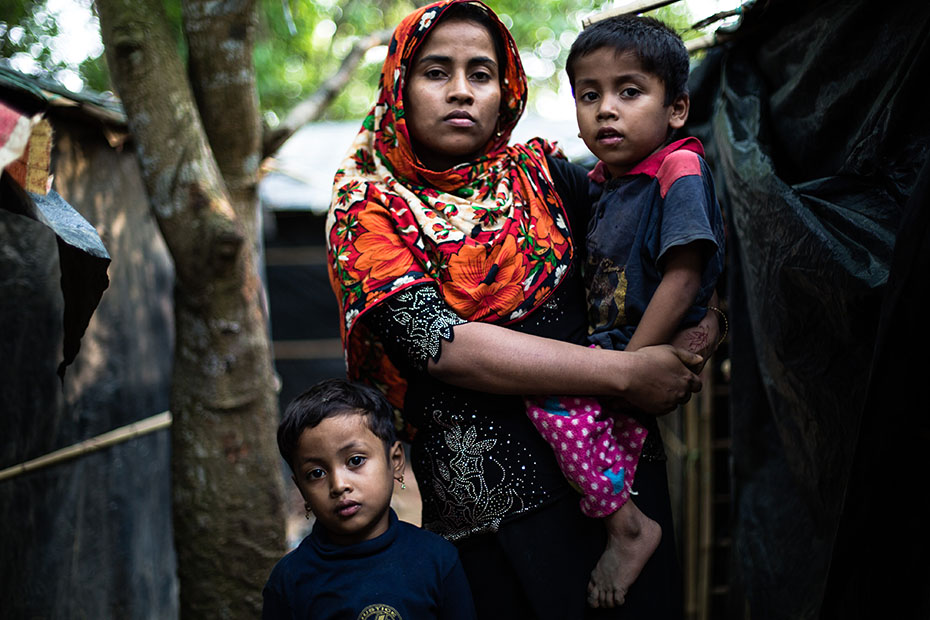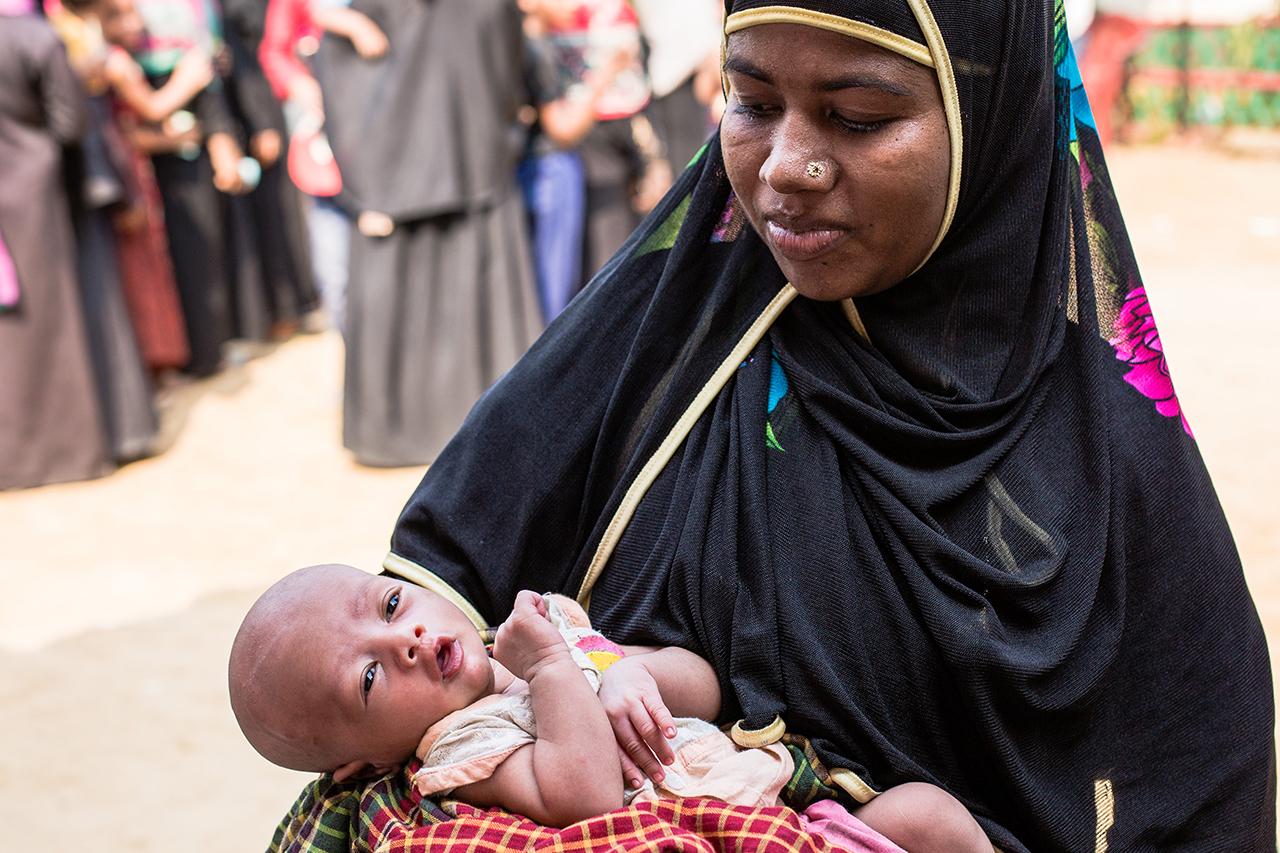Rohingya refugees in Bangladesh
- from a silent crisis to a screaming disaster









Running barefoot, 22-year-old Mohsena deftly dodges the sharp bamboo poles which jut out from the roofs of the shelters lining the narrow dirt path. One of these flimsy structures made with little more than wooden sticks covered with plastic sheeting is home to Mohsena and her family.
She hurries inside and bends down to pick up her sobbing 4-year-old son. He is disabled and looking after him requires her full attention. She left him alone briefly to fetch water from the nearby well, but his cries were so loud she had to turn back.
"He can't walk or barely sit. I can’t go very far from him," says Mohsena. “I feed him and clean him and carry him everywhere. But it gets too heavy to hold both my son and the water, so sometimes I must just leave him”.
It’s been three months since Mohsena and her two children fled from her home in the north of Rakhine State in Myanmar. They crossed the river that forms a border with Bangladesh and now live in an unplanned settlement on the outskirts of Kutupalong refugee camp in the district of Cox’s Bazar.
This and other makeshift camps in the district are hosting tens of thousands of Muslims who fled an upsurge of violence in areas in the north of Rakhine State which began last October...
Bangladesh, 2017.
See also this story by CNN with my photos & interviews of the Rohingya.